Physical Address
304 North Cardinal St.
Dorchester Center, MA 02124
The majority of adnexal masses are detected incidentally during obstetric ultrasound examinations; however, some are diagnosed due to symptoms related to their size or complications.
An adnexal mass is a lump in the tissue of the adnexa of the uterus, usually in the ovary or fallopian tube. Adnexal masses can be benign or malignant.
Adnexal masses are detected in 1%–4% of pregnant women.
One percent to 3% of adnexal masses detected in pregnancy are malignant (although usually of low malignant potential).
Cystic:
Follicular cysts are <3 cm, with no internal echoes.
Corpora lutea are 3–6 cm, with a color Doppler circumferential “ring of fire.”
Theca lutein cysts are multiloculated.
Cystadenomas are predominantly cystic but may have internal excrescences.
Solid:
A fibroma may appear similar to a uterine myoma.
Solid with cystic components:
Hemorrhagic cysts have internal echoes with “sludge.”
Endometriomas have blood in the cystic component.
Teratomas have multiple echogenic and cystic components and may have shadowing due to calcifications.
Paraovarian cyst
Hydrosalpinx
Leiomyoma
Bilaterality
Metastasis if malignant
Resolution occurs in 80%–90% of cases.
Lesions more likely to resolve include simple cysts <6 cm in diameter and those diagnosed before 16 weeks of gestation.
Persistent and large masses are more likely to result in torsion (up to 25%, typically in the first trimester), rupture (0%–9%), or obstruction of labor (2%–17%).
Malignancy occurs in 1%–3% of lesions overall.
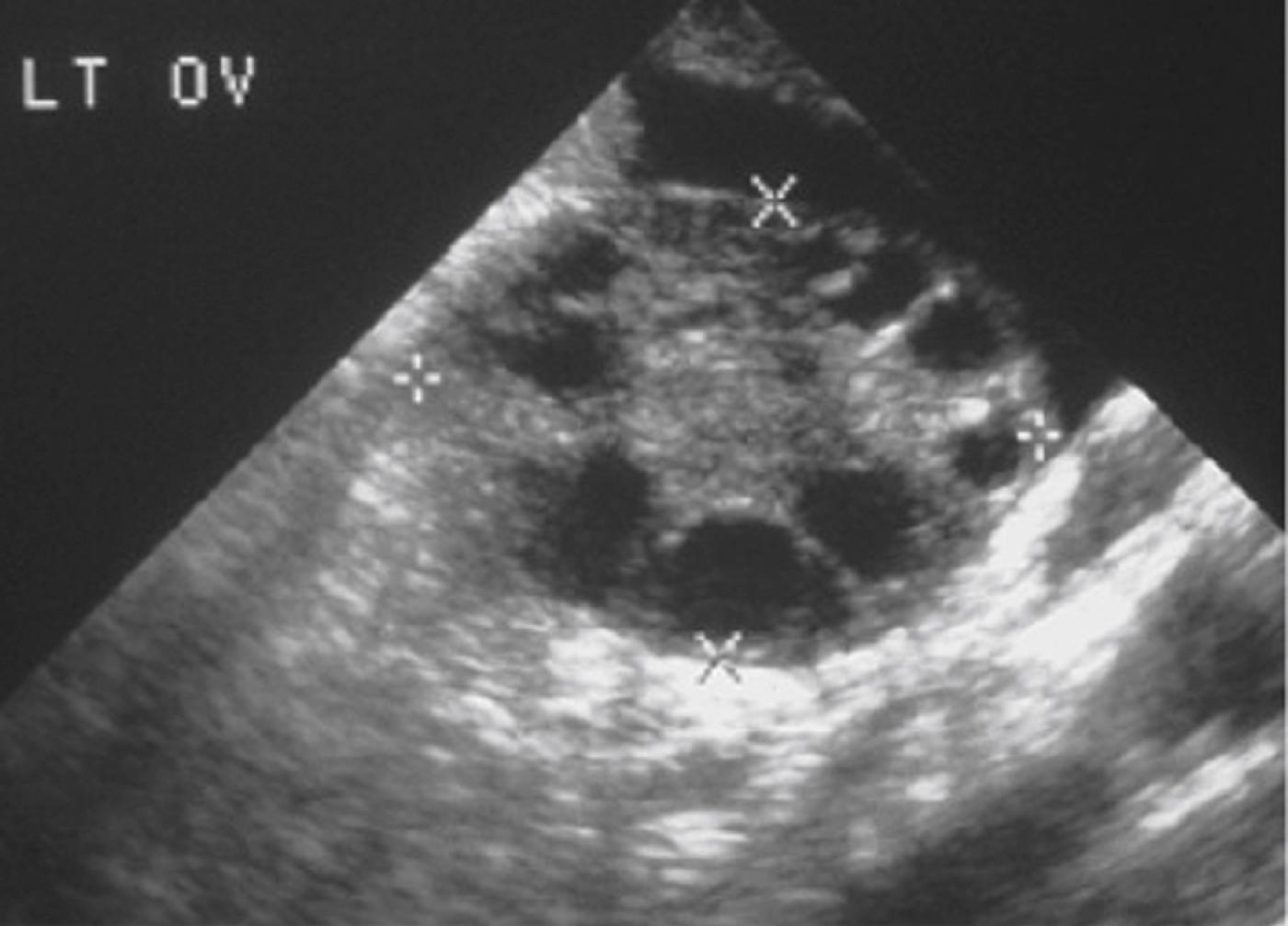
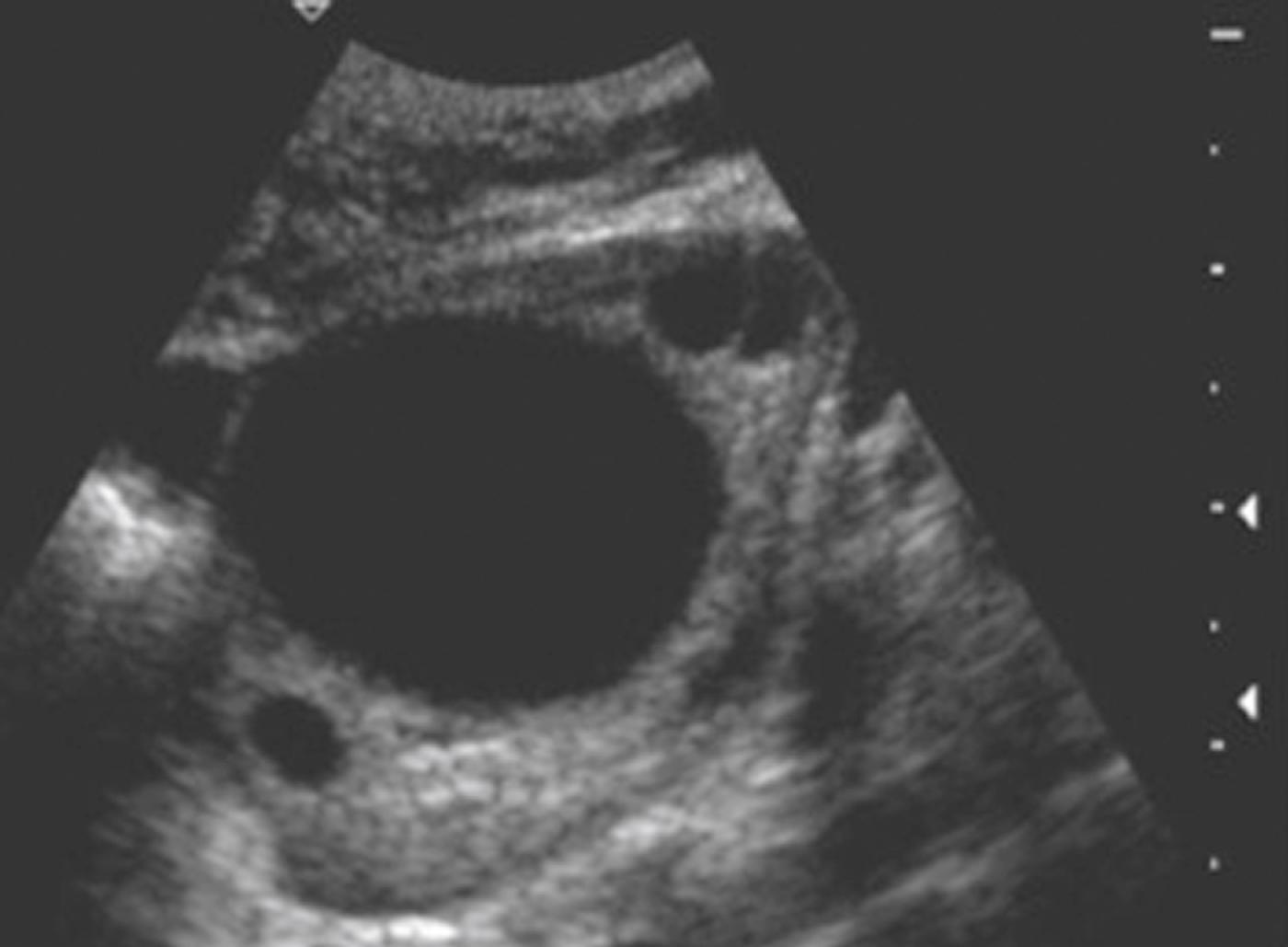
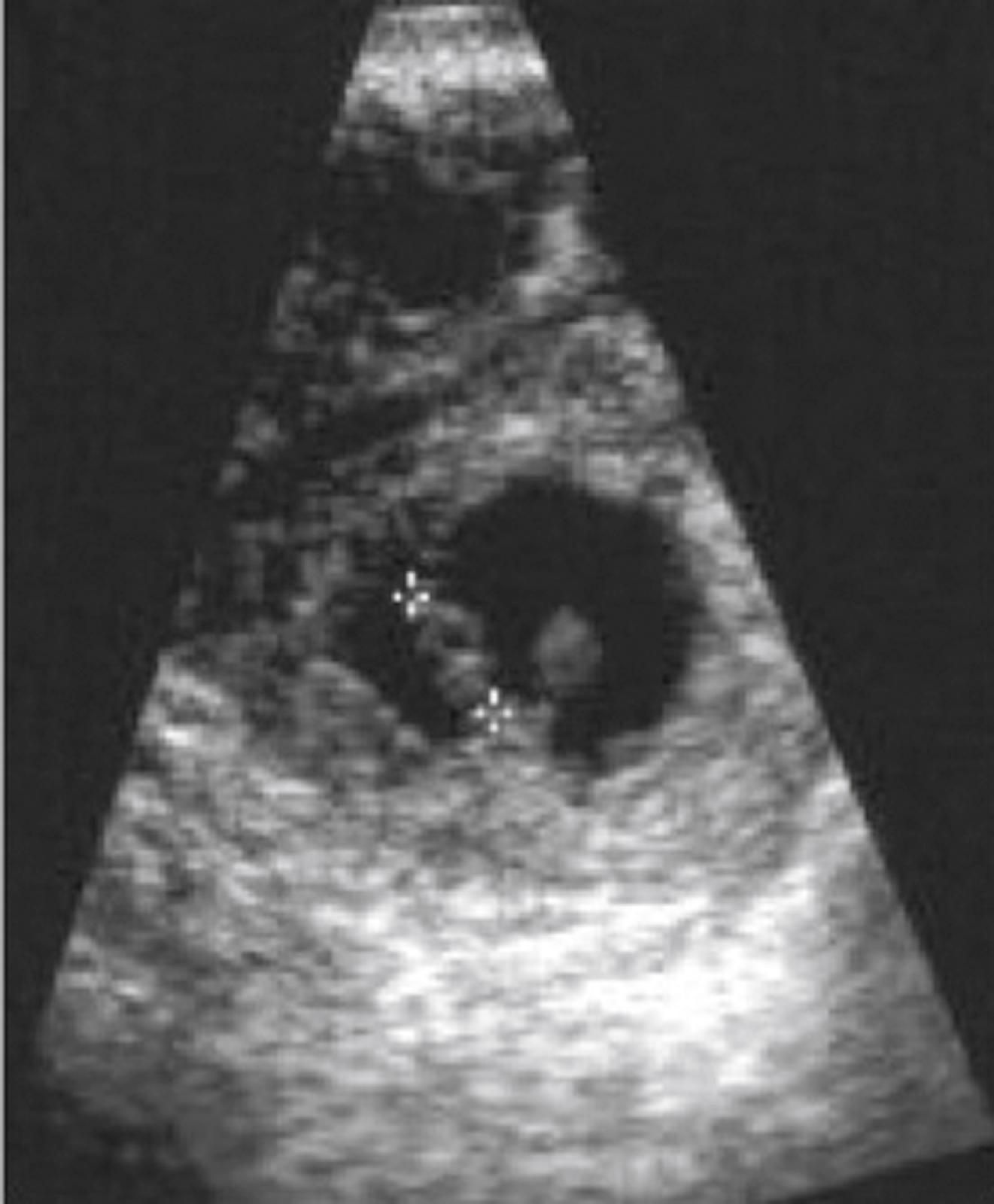
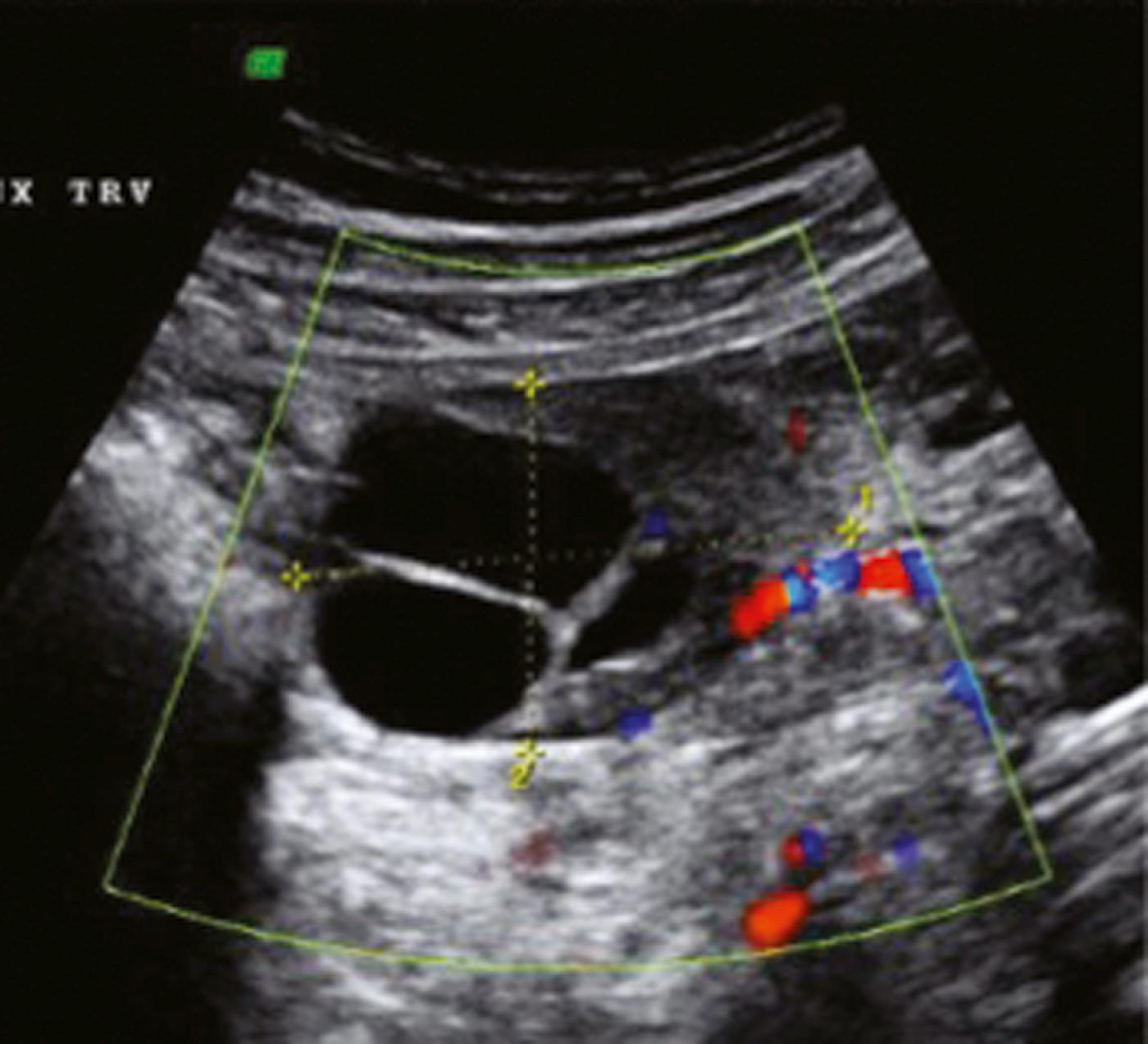
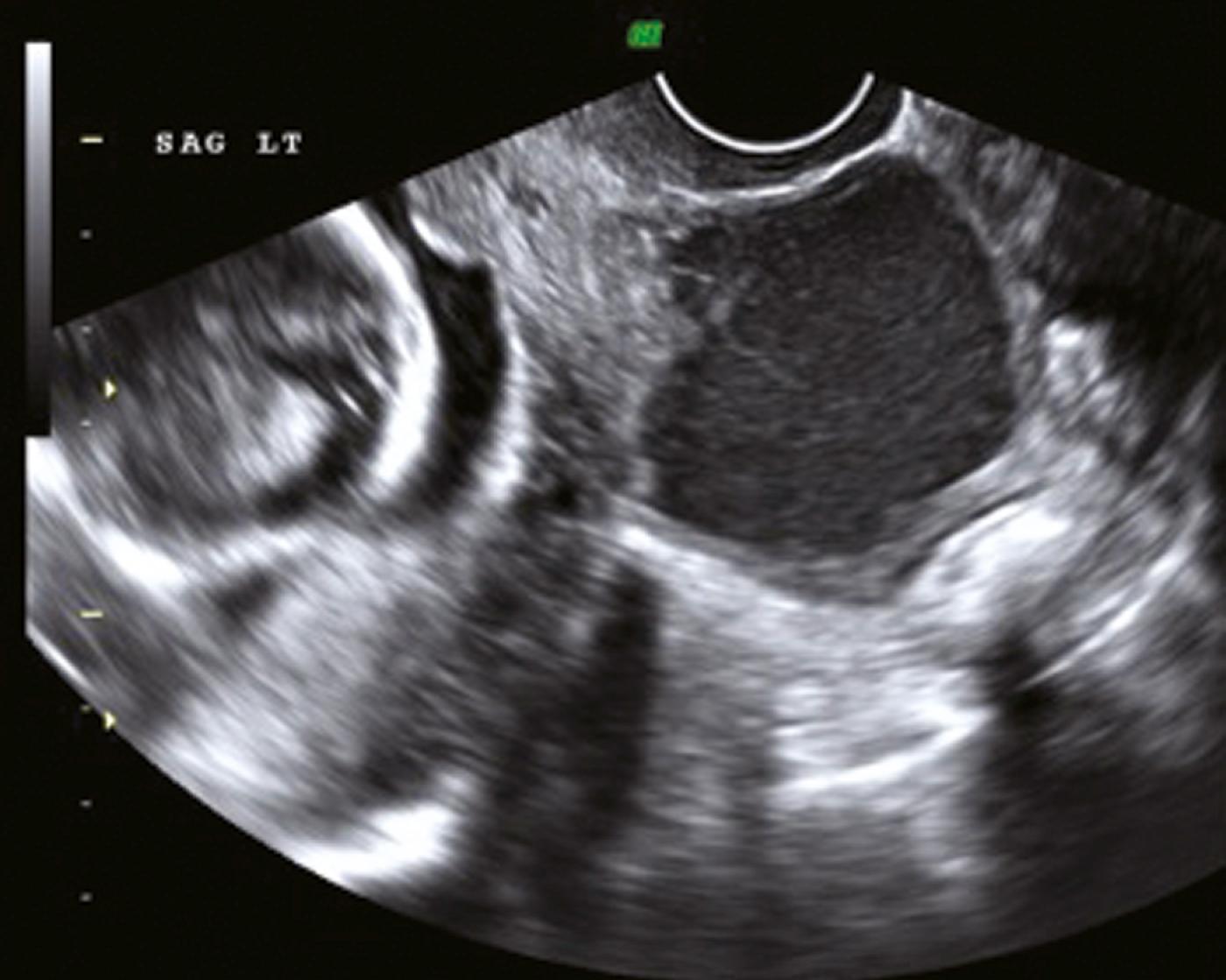
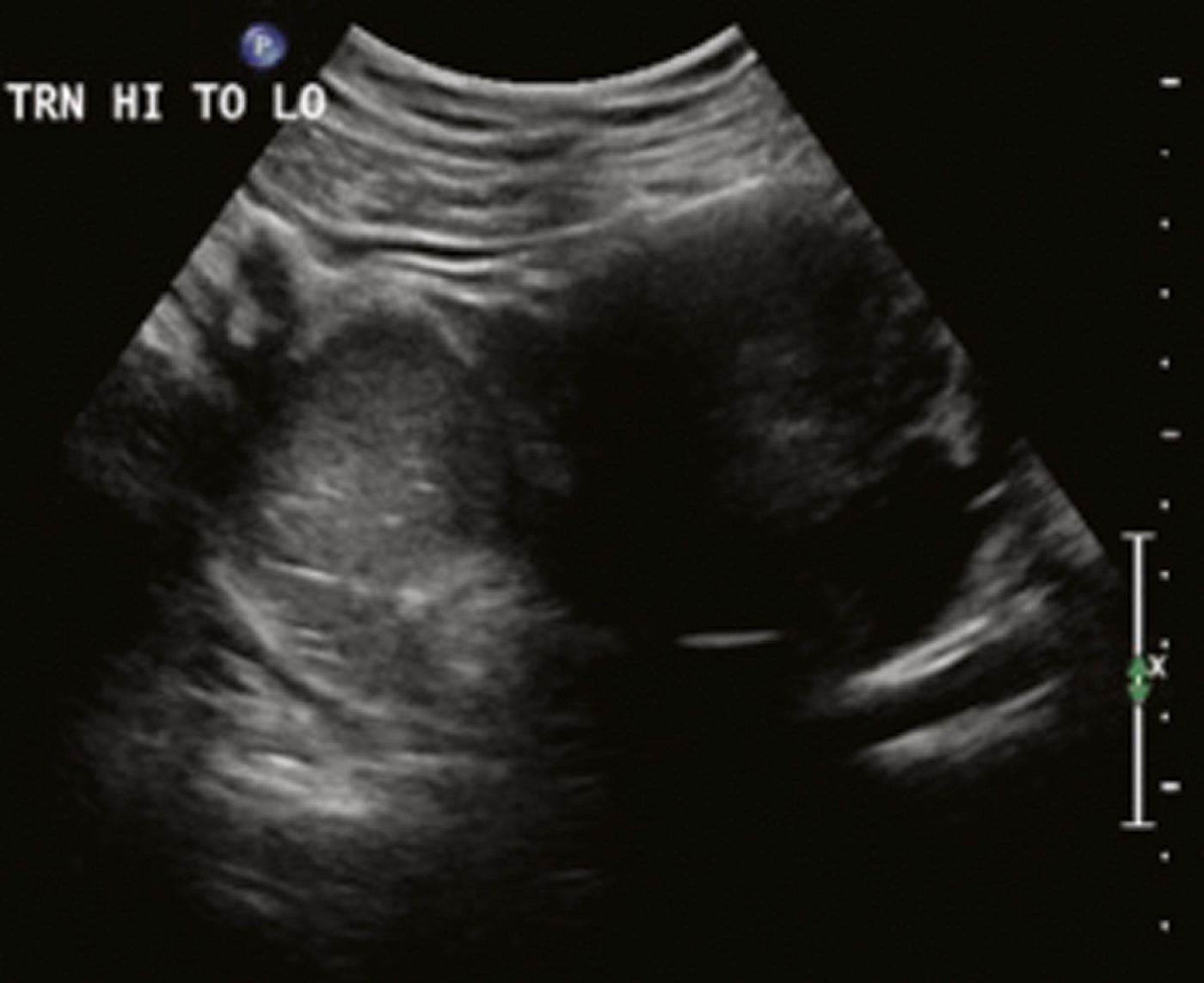
MRI may help differentiate dermoid tumors from other neoplasms.
Surgery is commonly recommended in the presence of persistent and large masses, which are at risk for torsion or rupture, or when the morphologic pattern suggests malignancy.
Surgery, if performed, has least fetal morbidity in the early second trimester.
The risk of fetal loss is similar with laparoscopy and open surgery, but laparoscopy carries a lower risk of preterm labor and lower blood loss.
Routine obstetric management for stable cystic lesions <6 cm.
If cesarean delivery is performed, appropriate surgical management, including staging if indicated, should be performed on all adnexal masses.
Planned cesarean delivery should be reserved for complex lesions that are strongly suspected to be malignant or that are likely to obstruct labor.
As indicated by gestational age and newborn condition at delivery.
Congenital uterine anomalies are rare in the general population, but they may have significant effects on fertility and risk of pregnancy complications.
Become a Clinical Tree membership for Full access and enjoy Unlimited articles
If you are a member. Log in here